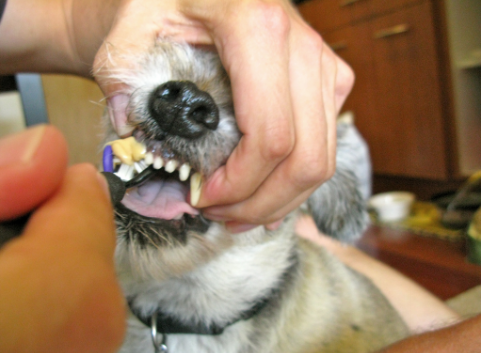Oral problems are not only restricted to humans, our pets too can be a victim of periodontal disease. According to the American Veterinary Medical Association, by two years of age about 70-80 percent cats and dogs develop some stage of gum disease. If ignored, the gum disease can increase leading to pain, bone loss and loss of teeth.
So, here we have come up with a few things that you should know about the oral health issues in dogs and cats.

1.What Causes Dental Disease in Pets?
Continuous accumulation of plaque in pets can lead to bone and tooth loss. Another factor that can be attributed to the onset of dental disease are the Streptococcus and Actinomyces bacteria, which mainly canines with crowded teeth witness. Poor nutrition leads to a low immunity level, which makes the periodontal condition worse.
But, the big question that arises here is how will you know that your pet is suffering from oral health issues? Well, we have made a list of the symptoms to ease the situation for you.
2.Symptoms of Periodontal Disease
You can identify whether your pet has a dental condition or not by opening his/her mouth and looking for the following symptoms:
- Bad breath- The plaques remaining in the mouth that occurs from the decaying food becomes the breeding ground for harmful bacteria. This leads to gingivitis and abnormally bad breath in the dog or cat’s mouth.
- Tartar- The plaque if not removed on time hardens to form tartar. A tartar is nothing but decayed food particles mixed with saliva in a hard form. The tartar can leverage the entire teeth of your pet and develop an underlying infection which needs to be treated immediately.
- Inflamed gums- If you notice that your pet’s gums are bleeding and a red line has formed on the outer line of the gums, then you should take your pet to the vet. This is caused by a bacteria which grows in the mouth from the leftover food particles and leads to infection.
- Swollen jaw- Sometimes due to infection in the root of the tooth an abscess is formed that leads to the swelling of the jaws. If you notice a small lump in the upper or lower jaw, it’s time you consult a doctor.
- Trouble chewing food- If you notice that your pet is just gulping the food or refusing to eat, then there are chances that he/she is having pain in the teeth or an underlying infection.
3 How to Treat the Pets?
If your pet is experiencing dental pain, then there is no DIY method for it. Take your pet to a reputed veterinary clinic and let the professional vets take care of the oral issues. A trained veterinarian will anesthetize your pet and take out a dental X-ray. If there are any infections, medicines will be given to treat the condition. For scrapping the plaques and tartar, a high powered ultra waterpik is used. If your pet’s teeth needs to be pulled out that is also done with utmost care.
4.Take Care of your Pet’s Dental Health
Prevention is better than cure! Your duty is to take care of your pet’s dental health. Cats need at least twice a week brushing, whereas the dogs require thrice a week. You need to maintain this routine for your pet. Additionally, you need to follow a successful three step dental care routine for your pet.
- Routine dental evaluation
- Professional dental care when required which includes dental cleanings
- Preventive dental care at home which includes regular brushing and proper dental diets
There are good veterinary services available in Braunfels. Your pet can get a complete dental care evaluation and treatment here. If you notice any kind of discomfort or warning signs in your pet’s mouth, without wasting time, consult the vet today!
